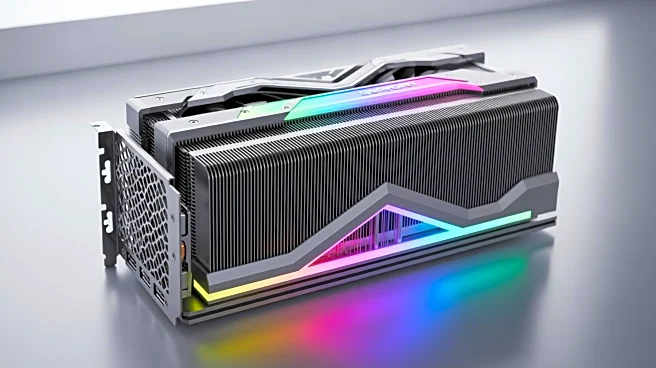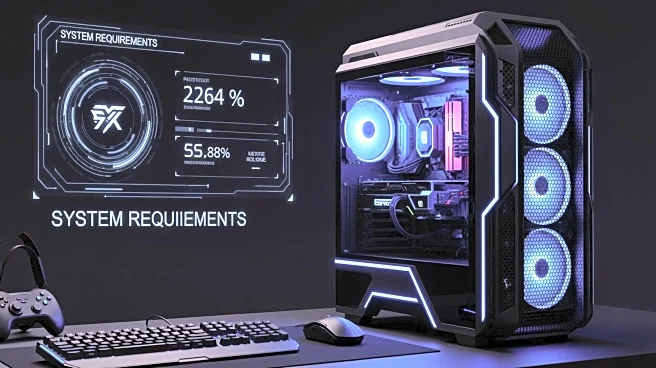What's Happening?
Details about AMD's upcoming Ryzen 5 7500X3D CPU have surfaced online, revealing its specifications and benchmark scores. The processor, based on AMD's Zen 4 architecture, features 6 cores and 12 threads, with a base frequency of 4.0GHz and a boost up to
4.6GHz. It includes 96MB of L3 cache and achieved Geekbench scores of 2,399 for single-core and 11,323 for multicore performance. Despite the leaks, AMD has not officially announced the release date or pricing for the Ryzen 5 7500X3D.
Why It's Important?
The leaked specifications and benchmark scores of the Ryzen 5 7500X3D highlight AMD's continued innovation in the competitive CPU market. As AMD seeks to maintain its position against rivals like Intel, the performance capabilities of the Ryzen 5 7500X3D could influence consumer and industry perceptions. The processor's high performance in benchmark tests suggests it may appeal to gamers and tech enthusiasts seeking powerful computing solutions. However, the lack of official information from AMD leaves questions about the product's market positioning and potential impact on AMD's financial performance.
What's Next?
As anticipation builds for the official release of the Ryzen 5 7500X3D, industry analysts and consumers will be watching for AMD's announcements regarding pricing and availability. The processor's performance could set new standards in the market, potentially influencing competitors' strategies and product offerings. Additionally, the broader implications of AMD's technological advancements may extend to other areas of the tech industry, including gaming and data processing.
Beyond the Headlines
The emergence of high-performance CPUs like the Ryzen 5 7500X3D underscores the ongoing demand for advanced computing power in various applications, from gaming to professional workloads. As technology continues to evolve, the role of CPUs in enabling new capabilities and experiences will remain a critical focus for both manufacturers and consumers. The competitive landscape in the CPU market may drive further innovation and price adjustments, benefiting end-users with more options and improved performance.














